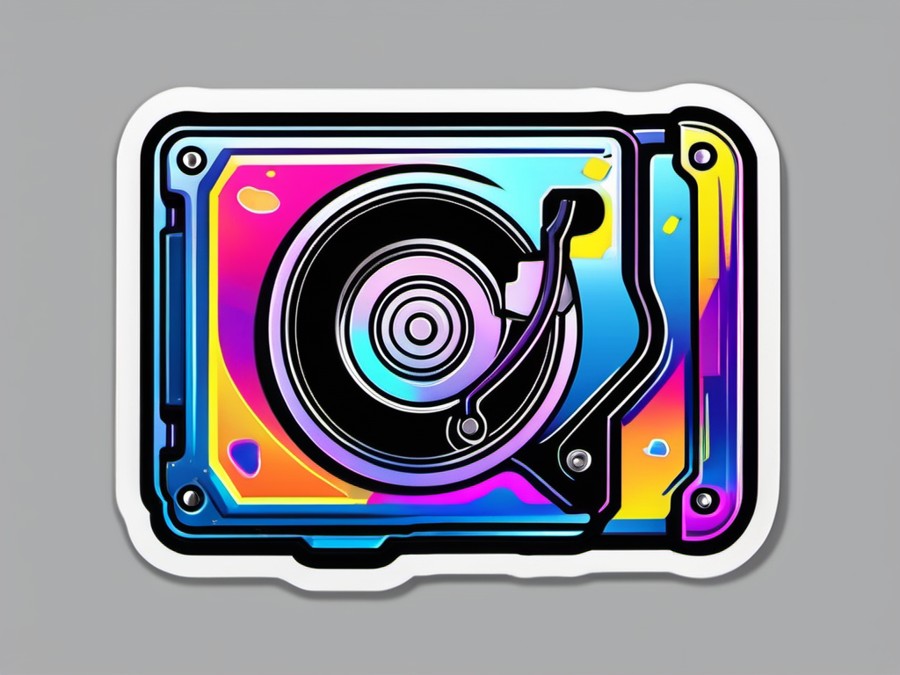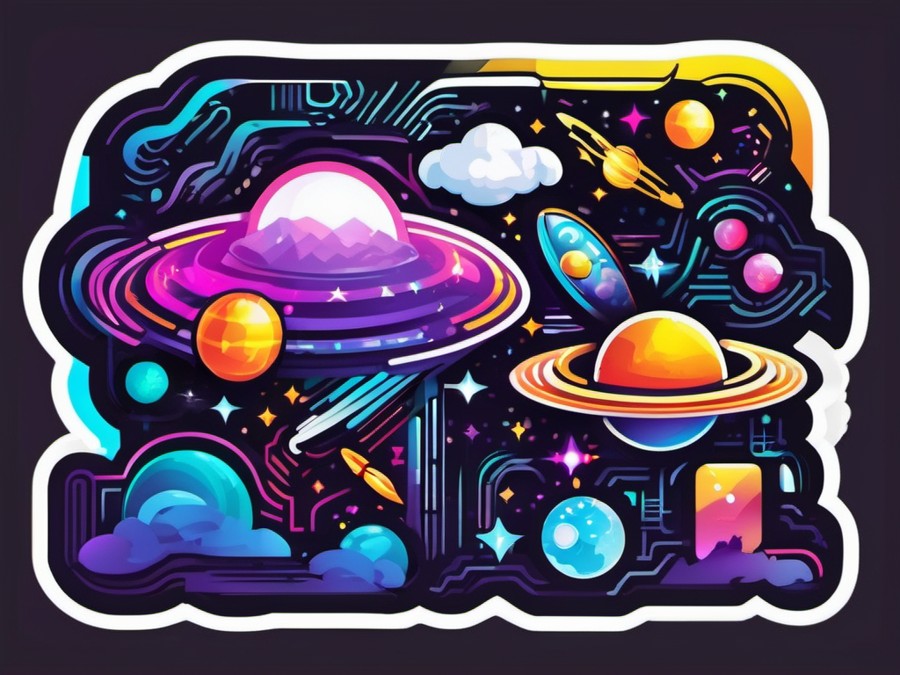· Charlotte Will · External Hard Drives · 8 min read
What is the Best Way to Backup Data Using an External Hard Drive?
Discover the best ways to backup data using an external hard drive, along with step-by-step guides for both Windows and Mac users. Learn about data security measures, regular maintenance, troubleshooting, and the advantages of external hard drives over cloud storage.

In today’s digital age, data backup is crucial for safeguarding valuable information. An external hard drive offers a robust and portable solution to keep your data secure. But how do you go about it the best way? Let’s dive in and find out!
Why Use an External Hard Drive for Data Backup?
External hard drives provide several advantages over other backup methods. They are portable, making it easy to transport large amounts of data from one location to another. Additionally, they offer high storage capacity, which is ideal for backing up extensive data collections such as large photo libraries, video files, and extensive documentation.
Portability and Ease of Use
One of the main reasons external hard drives are so popular is their portability. Whether you’re backing up data at home or in an office setting, a portable external hard drive can be easily moved from one computer to another. This makes it an excellent choice for professionals who need to access their data on the go.
Choosing the Right External Hard Drive
Selecting the right external hard drive is critical to ensuring a smooth and efficient backup process. Here are some factors to consider:
Storage Capacity
The amount of data you plan to backup will determine the storage capacity you need. If you’re dealing with large files like videos or high-resolution images, you might need an external hard drive with a capacity of 1TB or more. For more straightforward needs, a smaller capacity might suffice.
Speed (SSD vs HDD)
External hard drives come in two main types: Solid State Drives (SSDs) and Hard Disk Drives (HDDs). SSDs are faster and more reliable but come at a higher cost. HDDs, on the other hand, are more affordable and offer larger storage capacities but can be slower. For more details on the best SSDs for backup, check out this article.
Compatibility with Your Device
Ensure that the external hard drive you choose is compatible with your computer or device. Most modern drives come with USB 3.0/USB 3.1 interfaces, which provide faster data transfer rates and are more reliable than older USB 2.0 connections. You can read more about the benefits of these interfaces here.
Preparing Your Data for Backup
Before you begin the backup process, it’s important to prepare your data. Identify which files need to be backed up and organize them in a way that makes the process more efficient.
Identifying Which Files to Backup
Not all files need the same level of protection. Prioritize documents, photos, videos, and other important data that would be difficult or impossible to replace.
Organizing Your Data for Efficient Storage
An organized system makes the backup process smoother. Create folders and subfolders that reflect your data categories, making it easier to locate specific files if needed.
Step-by-Step Guide to Back Up Data Using an External Hard Drive
Windows Users:
For Windows users, there are several ways to backup data using an external hard drive.
Using File History
File History is a built-in Windows feature that automatically saves copies of your files. To use it:
- Connect your external hard drive to your computer.
- Open File History by searching for it in the Start menu.
- Turn on File History and select your external drive as the save location.
Manual Backup Process
For a manual backup:
- Connect your external hard drive.
- Open File Explorer and navigate to the data you want to backup.
- Copy and paste the selected files onto your external drive.
Mac Users:
For Mac users, Time Machine is the go-to backup solution.
Using Time Machine
Time Machine automatically backs up your entire Mac, including system files, applications, accounts, preferences, music, photos, videos, and documents. To set it up:
- Connect your external hard drive to your Mac.
- Open System Preferences and select Time Machine.
- Choose your external drive as the backup disk.
Manual Backup Process
For a manual backup:
- Connect your external hard drive.
- Open Finder and navigate to the data you want to backup.
- Copy and paste the selected files onto your external drive.
Setting Up Automatic Backups
Configuring your device for automatic backups can save you a lot of time and hassle. Both Windows and Mac OS have built-in features to make this process seamless.
Configuring Automatic Backups
- Windows: Use File History as outlined above.
- Mac: Set up Time Machine in System Preferences.
Automatic backups ensure that your data is regularly and consistently backed up without any manual intervention.
Data Security Measures
While external hard drives provide a convenient backup solution, it’s essential to take additional security measures to protect your data.
Encrypting Your External Hard Drive
Many external hard drives come with built-in encryption features that add an extra layer of security. Encryption ensures that even if your drive is lost or stolen, the data on it remains inaccessible to unauthorized users.
Physical Protection for Your Drive
In addition to digital security, it’s crucial to protect your external hard drive physically. Store it in a safe place and consider using a protective case if you plan to move it frequently.
Regular Maintenance and Updates
Regular maintenance is key to ensuring that your backed-up data remains safe and accessible. Here are some tips:
How Often Should You Backup Your Data?
The frequency of your backups depends on how often you create or update important files. For critical data, consider daily or weekly backups.
Keeping Your External Hard Drive in Optimal Condition
Regularly check your external hard drive for any errors or issues. Keep it in a cool, dry place away from direct sunlight and heat sources to prolong its lifespan.
Troubleshooting Common Issues
Even the best systems can encounter problems. Here’s what to do if your backup fails:
What to Do If Your Backup Fails?
- Check Connections: Ensure that your external hard drive is properly connected to your device.
- Verify Compatibility: Make sure the external drive is compatible with your system’s operating software.
- Check for Errors: Use built-in tools to diagnose and fix any errors on the drive.
Ensuring Data Integrity and Recovery Options
To ensure data integrity, you can use checksum tools that verify the consistency of your files after a backup. For file recovery options, consider using specialized software designed to recover data from corrupted or damaged drives.
Backup Solutions for Specific Scenarios
Different users have different needs. Here are some specialized backup solutions:
Backup Solutions for Businesses
Businesses need robust and reliable backup solutions that can handle large volumes of data. Consider using NAS (Network Attached Storage) systems for centralized backup solutions. Read more about the best internal hard drives for NAS systems here.
Specialized Backup Needs for Photographers and Videographers
For photographers and videographers dealing with large files, an SSD external hard drive might be more suitable. Check out this article for more information.
Comparing External Hard Drives with Cloud Storage
While external hard drives offer portability and high storage, cloud storage has its own advantages. Here’s a comparison:
Pros and Cons of Each Method
External Hard Drives:
- Pros: High storage capacity, no internet dependency.
- Cons: Vulnerable to physical damage or loss.
Cloud Storage:
- Pros: Access from anywhere, automated backups.
- Cons: Dependent on internet connectivity, potential security risks.
Which is Right for You?
The choice between an external hard drive and cloud storage depends on your specific needs. If you deal with large files and require physical security, an external hard drive might be best. For those who prioritize accessibility and convenience, cloud storage could be the answer.
Success Stories: Real-Life Examples of External Hard Drive Backups
Let’s look at a few real-life examples demonstrating the value of external hard drive backups.
Personal Anecdotes or Case Studies
Case in point: a small business owner who lost critical financial data due to a system crash. Thanks to regular backups on an external hard drive, they were able to restore their data and continue operations without major disruptions.
Future Trends in Data Backup
The field of data backup is continually evolving, with new technologies emerging to improve efficiency and security.
Emerging Technologies
- AI and Machine Learning: These technologies can help predict and preemptively address potential backup issues.
- Advanced Encryption: New methods of encryption continue to enhance data security.
Conclusion
Backing up your data using an external hard drive is a robust and reliable solution. By choosing the right drive, preparing your data effectively, following step-by-step backup processes, and implementing security measures, you can ensure your digital assets remain protected. Don’t wait—start backing up your data today!
FAQs
What is the best way to backup my data for long-term storage?
For long-term storage, consider using multiple backups—both external hard drives and cloud storage. This redundancy ensures your data is safe even if one backup method fails.
How often should I test my backups?
Regularly testing your backups is crucial. Aim to perform a test every few months to ensure that your backed-up data can be successfully restored.
What happens if my external hard drive fails?
If your external hard drive fails, you may need to use data recovery software or services. Having a second backup on another external drive or in the cloud can mitigate the risk of data loss.
Can I use an old external hard drive for backup?
While it’s technically possible, older drives may have lower storage capacities and slower data transfer rates. It’s usually better to invest in a new drive for optimal performance.
Is it safe to use an external hard drive for backing up sensitive data?
Yes, if you encrypt your external hard drive and store it securely. Encryption adds an extra layer of protection, ensuring that even if the drive is lost or stolen, your sensitive data remains inaccessible.




